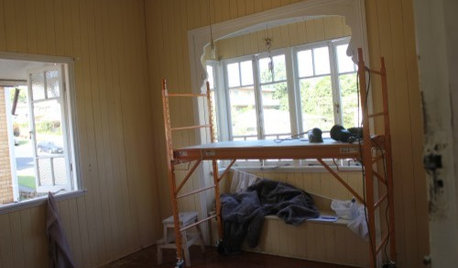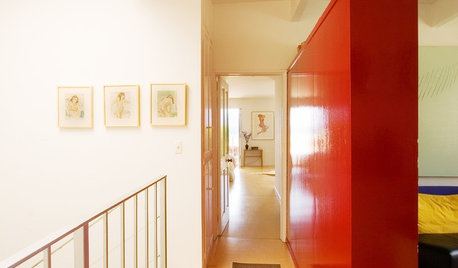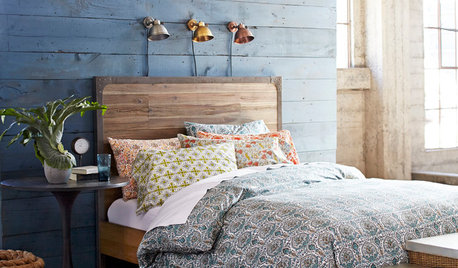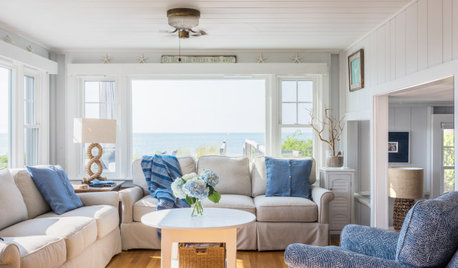Hi all,
I have various paint questions--primarily with how to deal with painting over peeling, chipped or lead paint. We are moving into our first house and money is TIGHT, so we had planned to do this mostly ourselves, once we got a $7000 quote. So, we will at least try to figure this out ourselves, but if we do a horrible job in our first couple tries and we will have to get someone else to complete the work (probably bit by bit), I still want to understand what needs to be done so that I can be certain they are doing things correctly--because I have lived in homes where the "pros" did a really crappy job, and I DO NOT want that here. So, I am grateful for any guidance/insight. I am a definite newbie, and even though I have been reading forums and do it yourself articles and watching videos to try to answer these questions, I still don't understand a lot of the lingo, so if you can be as plain, specific and clear as possible, that would be great!
1) Shiny paint over multiple layers of paint, likely including lead paint.
The house was made in the 1930's, and the prior owners didn't do much work, so I am just assuming that there is at least one layer of lead paint on every wall (except for those that are solely covered by wallpaper). There is a top-layer of paint (among multi-layers) throughout the house that is not chipping or peeling--and may be recent enough to not be lead itself. It is a shiny paint of unknown origin and composition. The walls are also a bit "lumpy", so we were hoping to skim coat them before painting. The walls themselves appear to be plaster and lathe for the most part.
I removed all of the wallpaper from the walls, and some of those appeared to be a different material than the lathe & plaster. (There is no paint on these walls.) It is a shinier white material, and I noticed that many of the edges, where two pieces come together, are black/dark gray. This is present in rooms that must have been part of the original house, so it must have been a product that was available in the 1930's.
What are the best steps for skim coating all of these walls?
From what I have gleaned, the steps appear to be:
1- DO NOT SAND
2- Prime (what should I use to prime with? ZINSSER GARDZ?)
3- Skim coat (what should I use here? I have seen multiple items recommended, but I was going to try to roller-on and use the Magic Trowel method. What skim coat product works best with this and under my conditions?)
4 - Prime
5 - Paint
2) Peeling paint, mostly on doors and trim.
Before the house was sold, the seller did a really crappy paint job, and it looked nice at the time, but you can now tell that he either didn't know what he was doing, or was just trying to save a few bucks, because almost all of the "shiny" white paint used as trim and on doors is peeling. In some places it is just "chipping" off in small flakes, but in other places it is peeling off in big pieces and is stretchy. Finally, in some places, it appears the same paint was used, but it is not chipping/peeling--yet. How do i deal with this situation? I would definitely prefer not to have to scrape the paint off of the trim/doors/moulding of the entire house if not necessary.
3) Wainscotting/beadboard with chipped paint.
We have a room with beadboard around it. It is made of wood but covered in multiple layers of paint (I didn't even realize that it was made of wood originally until the electrician created some chips in paint when installing new outlets.) It is generally in good shape, but In between a few of the panels there are cracks in the paint, but this does not go down to the wood. There are also a few chips in the paint down to the wood itself. How should I fix this situation in order to re-paint the beadboard.
Thank you!


















User
Related Professionals
Barrington Hills Kitchen & Bathroom Designers · East Islip Kitchen & Bathroom Designers · Magna Kitchen & Bathroom Designers · Manchester Kitchen & Bathroom Designers · Ojus Kitchen & Bathroom Designers · 20781 Kitchen & Bathroom Remodelers · Aurora General Contractors · Dardenne Prairie General Contractors · Las Cruces General Contractors · Livermore General Contractors · Montebello General Contractors · Mount Prospect General Contractors · Norwell General Contractors · Spencer General Contractors · Waldorf General Contractors